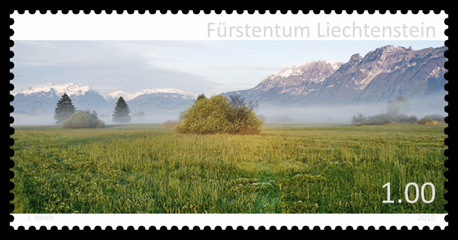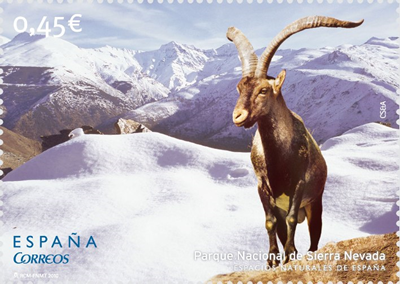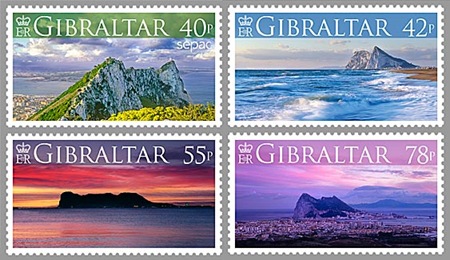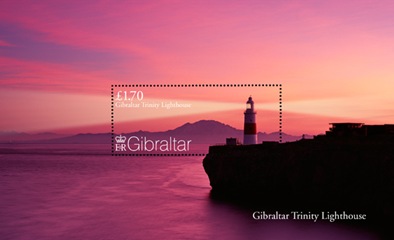The first two stamps in the “Liechtenstein Panorama” series highlight the “valley landscape”. The panoramic photograph reproduced on the stamps is by the Ruggell photographer Josef Heeb.These stamps were issued by Liechtenstein Post on September 2010.
The panoramic photograph was taken in the middle of the Ruggell marsh in a slowly dispersing morning mist. The view shown is from the north looking south. Far away in the background one can see the Mt. Pizol massif in the Sarganserland.
Although the picture most people have of Liechtenstein is determined by the mountain world of the Lower Alps, in reality it is the valley landscape divided in two by the Rhine which for centuries has influenced the fate of this country’s people. It was on the valley’s elevated parts (such as Gutenberg or Eschnerberg) which offer protection against the Rhine floods that the first settlements came into being some 7 000 years ago, and the Rhine which linked Rome with the Empire’s northern provinces and later became one of the most important trade routes between northern and southern Europe. This continuous contact with the throngs of people passing through the Rhine valley, along with the ideal conditions for profitable farming, had a significant influence on the people’s character and habitual way of life.

On the “East” stamp (face value CHF 1.00) one can see the gently rising summit of the Eschnerberg together with the Liechtenstein Dreischwestern massif. Both these heights are still in shadow.

On the “West” stamp (face value CHF 1.00) the mountains of the Alvier chain in St. Gallen canton are already bathed in the soft light of the morning sun as it rises over the Liechtenstein mountains. At the centre of the stamp is a white willow, characteristic of this area and called “Felba” in the local dialect.

The combined view of the East stamp and the West stamp.







